Insects use the same types of non-hexagonal cells to overcome building challenges
AUBURN UNIVERSITY COLLEGE OF SCIENCES AND MATHEMATICS
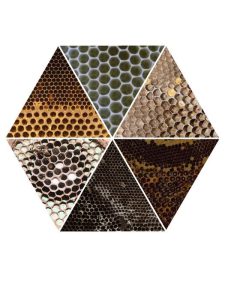
IMAGE: PHOTO CREDIT: MICHAEL L. SMITH
At first glance, the hexagonal cells build by honey bees and social wasps may seem similar, but they are significantly different. Honey bees build using wax, whereas wasps use paper. Honey bees build their double-sided combs vertically, whereas wasps build single-sided comb horizontally (i.e., the opening of each cell faces downward).
Indeed, the hexagonal cells built by these two groups have independent evolutionary origins. Just like sharks and whales have similar body plans due to their watery environment, bees and wasps build hexagonal cells because the shape maximizes strength and storage area, while minimizing building materials.
But what happens when perfectly hexagonal cells cannot be built? Do bees and wasps fix their building problems in the same way?
In a subset of honey bee and wasp species, workers build two different sizes of hexagons. The smaller cells are used for rearing workers, and the larger cells are used for rearing reproductives; drones and queens. This difference in cell sizes creates an inherent architectural problem: how do you tile two differently-sized hexagons within a single sheet of comb?
To determine how different species solved the same architectural problem, the researchers needed nest images that included both worker and reproductive cells in the same comb.
First-author Dr. Michael L. Smith, Assistant Professor in the Department of Biological Sciences at Auburn University, and Affiliate Member of the Max Planck Institute for Animal Behavior, contacted researchers across the globe for potential images. They then used custom-built software to extract per-cell metrics from 22,745 individual cells.
In some species, like Metapolybia mesoamerica, worker and reproductive cells are the same size, so there was no architectural hurdle to overcome. In other species, like Apis andreniformis, reproductive cells are up to 2.7 times larger than worker cells, which creates a serious building problem – how to combine these wildly different hexagons in an efficient way?
Looking across 10 species, the researchers found that as the scale of the building problem increased (the size difference between worker and reproductive cells), workers began incorporating non-hexagonal cells. These irregular cells were mostly 5- and 7-sided, but they were consistently built in pairs, with the 5-sided cell built on the worker-side, followed by a 7-sided cell on the reproductive side. This pattern was seen in all the honey bee and wasp species that had a cell-size difference to overcome. For a group of insects renowned for their hexagonal cells, this alone was interesting, as it showed that they all rely on the same non-hexagonal configurations.
The researchers then built a mathematical model that would predict, based on the cell-size difference, how many non-hexagonal cells should be incorporated into the worker-to-reproductive transition. Surprisingly, some of the species were consistently performing better than expected. Upon closer investigation, the researchers saw that these species also incorporated intermediate-sized cells into the transition region. The intermediate-sized cells were still hexagonal, but they allowed the insects to “split the difference” and turn the cell-size transition into a series of smaller ones, which didn’t require non-hexagonal cells.
These same building tricks were adopted across all species of bees and wasps investigated. Despite being separated by over 179 million years of evolution, using different building materials, and independent origins of hexagonal cells, these species have all arrived at the exact same solution to this scalable architectural problem.
“Once we were able to plot out all the data, the results were striking – you could see how the bees and wasps used intermediate-sized cells to make a gradual change, but also how consistently the non-hexagonal cells were arranged in the comb” said Michael L. Smith.
This work has implications for how collective systems can build adaptive and resilient structures without centralized control. There is no single bee or wasp “architect” building the entire structure, instead, it is hundreds or even thousands of individuals contributing to the final product.
This work, titled “Honey bees and social wasps reach convergent architectural solutions to nest-building problems,” was published 27 July 2023 in the journal PLOS Biology.
This study was funded by the National Science Foundation, the German Research Foundation, a Packard Fellowship for Science and Engineering, and GETTYLABS.
This manuscript is published in PLOS Biology and is freely available at the following link: http://journals.plos.org/plosbiology/article?id=10.1371/journal.pbio.3002211
We are here to share current happenings in the bee industry. Bee Culture gathers and shares articles published by outside sources. For more information about this specific article, please visit the original publish source: http://journals.plos.org/plosbiology/article?id=10.1371/journal.pbio.3002211
]]>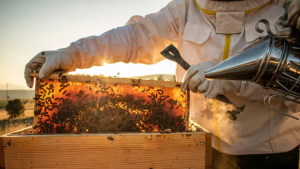
Honey bees are invaluable both for biodiversity and agriculture as they are excellent pollinators, yet their numbers worldwide have been dropping dramatically. The causes include climate change, habitat loss, pesticide use and diseases.
It is in this latter category of threats that entomologists from the University of Florida, the Agricultural Research Service-USDA, Louisiana State University and the University of Nebraska-Lincoln have made marked progress. They have done so by prompting honey bees’ cells to produce free radicals for protecting the insects against a range of potentially deadly viruses.
In field studies researchers used a compound called pinacidil to alter potassium ion channels, a protein found in the cells of bees’ and other iving things. Altering these channels produced slightly more free radicals, they explain.
The scientists gave the drug to honey bee colonies by mixing it into sugar water and drizzling it over their honey comb at night. The bees consumed the sugar water and also fed it to their young, thereby spreading the drug throughout the colony.
The treatment protected bees from six viruses that take their toll on honey bee colonies: Israeli acute paralysis virus, deformed wing viruses A and B, black queen cell virus, and Lake Sinai viruses 1 and 2.
“This approach is especially exciting because it doesn’t just target a specific type of virus but helps with many different viruses,” stresses Daniel Swale, an associate professor in the UF/IFAS entomology and nematology department.
“Additionally, we demonstrated that our treatment works both in the lab and in colonies that each contain 80,000 bees in the field,” he adds. “This is huge because in a hive setting bees are exposed to so many different viruses and stressors, so successfully controlling viruses in that environment is very encouraging.”
While viruses are not the greatest cause of deaths among bees, they can contribute significantly, according to the experts.
“Varroa mites are the number one cause of honey bee losses, but it’s important to point out that varroa mites, aside from physically weakening bees, also transmit viruses to bees. If we can mitigate viruses in honey bee colonies, that would be a big step forward,” says Michael Simone-Finstrom, a research molecular biologist with the ARS Honey Bee Breeding, Genetics, and Physiology Research Lab in Baton Rouge, Louisiana.
In their study the researchers also showed that pinacidil helped more bees survive in colonies infested with varroa mites.
Administering the drug to commercial honey bee hives may work only for some beekeepers as it is fairly expensive. However, this research shows the way in developing other drugs that cost less.
“One of the big take-aways from this study is that potassium ion channels can be a target for improving immune system function in honey bees and possibly other insects. We would like to find a molecule, such as a peptide, or a new technology that has the same effect as pinacidil but is more accessible to beekeepers,” Swale says.
We are here to share current happenings in the bee industry. Bee Culture gathers and shares articles published by outside sources. For more information about this specific article, please visit the original publish source: Scientists Develop a Drug to Protect Honey Bees from Viruses – The Good Men Project
]]>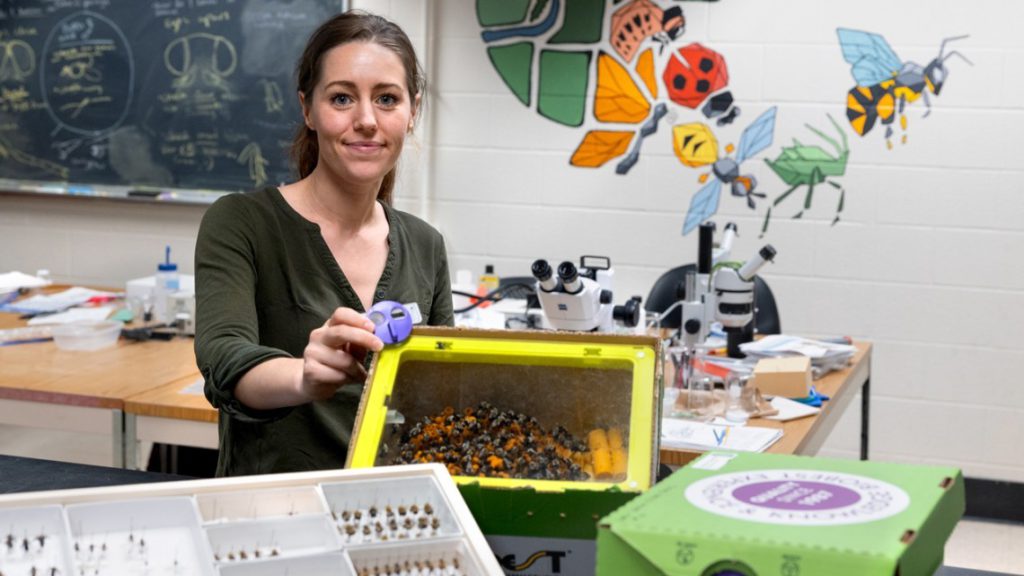
Credit:Ryan Young/Cornell University Researcher Heather Grab holds an excluder next to a commercial bumblebee nest box.
Bumblebee research sparks rapid industry change
By Krishna Ramanujan, Cornell Chronicle
A Cornell study that revealed commercial eastern common bumblebee hives pose a threat to their wild counterparts has led one major pollination company to quickly adapt the bumblebee hive boxes they ship to growers.
The study, which published in February in the Journal of Applied Ecology, showed that brightly colored commercial bumblebee nest boxes attract wild queens, who may be seeking to establish their own nests. When wild queens enter these nest boxes, workers treat them as invaders and kill them, which causes losses of wild hives – and valuable pollinators – in those areas.
The study also found that attaching an existing device – called an excluder – to the nest box doorways, was 100% effective at preventing wild queens from entering hives.
The company, Plant Products, a North American subsidiary of Biobest, has already provided excluders for the entrances and exits of all hives it ships, along with excluder operating instructions. In addition, a product manager has called every client to explain the use of the excluder, which makes a doorway too small for large queens, but big enough for workers.
“For every queen that we’re losing because of this behavior, that’s a whole colony of bumblebees that we’re potentially losing that’s providing really important pollination services later in the season,” said Heather Grab, Ph.D. ’17, senior lecturer in the School of Integrative Plant Science in the College of Agriculture and Life Sciences, and the paper’s corresponding author. Olivia Miller ‘21, who worked on this research as part of her undergraduate thesis, is the paper’s first author.
“From what we see in our data, it’s an average of about 10 queens per colony that are being killed, and that’s just in our study region,” she added.
The study also found that pollination services actually declined at sites where commercial bumblebee colonies were used, compared to areas where they were not used. The scientists suspect that the drop-in services was due to the loss of wild pollinators.
A few months prior to the paper’s publication, co-author Scott McArt, Ph.D. ’12, associate professor of pollinator health in the Department of Entomology (CALS) and manager of the Dyce Lab for Honeybee Studies, contacted Plant Products and Koppert, the only two North American commercial bumblebee suppliers, to tell them about their findings and how excluders offer a simple and effective solution. By the time the paper published in February, Plant Products was already prepared to add excluders to all its shipments. The company has also started research and development to evaluate optimal strategies going forward.
“Frankly, I’ve been blown away by how quickly Biobest responded to the study’s findings and implemented simple but effective companywide changes,” McArt said.
The excluders were originally developed for a completely different purpose, but came in handy when the Cornell researchers made their discovery. Commercial bumblebee nest boxes come with two openings, which serve as an entrance and an exit for the bees. The openings can be slid shut, so if growers spray their crops, they can close the exit to keep bees in but leave the entrance open for bees out foraging to return. Also, if growers want to move a hive, they can close both openings and reopen them in a new location.
Excluders were originally developed to cover just the exit, to prevent commercial hive queens from escaping and mating with wild bees and mixing genes, and/or spreading disease. No one expected they would be needed to keep wild bees out. Now Plant Products is using the excluders on both the entrances.
Overall, bumblebees have been experiencing population declines throughout North America, so saving queens early in spring has a high potential to stem some of those declines, McArt added.
Katja Poveda, associate professor of entomology in CALS, was also a co-author of the paper.
We are here to share current happenings in the bee industry. Bee Culture gathers and shares articles published by outside sources. For more information about this specific article, please visit the original publish source: Bumblebee research sparks rapid industry change | Cornell Chronicle
]]>This questionnaire is produced by the Nutrition Task force of COLOSS that gathers worldwide researchers interested in bee nutrition (link).
The result of the questionnaire will permit to increase knowledge about:
- How is feeding used across time and space
- How beekeepers perceive feeding
- Malnutrition (including starvation) risks, i.e., when do bees starve? Which are the main nutritional stress factors?
- Future feeding paths: what should be pursued or avoided in the future?
The anonymised results of this questionnaire will be shared to those who completed this questionnaire as well as key stakeholders.
Please see here for further information on data privacy policies.
]]>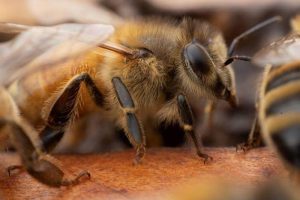 Bees make decisions better and faster than we do, for the things that matter to them
Bees make decisions better and faster than we do, for the things that matter to them
In a new study published in the Journal eLife, researchers shed light on the remarkable decision-making abilities of honey bees, showcasing how millions of years of evolution have finely tuned these insects to make rapid and accurate choices while minimizing risks. This newfound understanding not only deepens our knowledge of insect brains but also offers valuable insights into the evolution of our own cognitive processes and the design of more advanced robots.
Led by Professor Andrew Barron from Macquarie University in Sydney, along with Dr HaDi MaBouDi, Neville Dearden, and Professor James Marshall from the University of Sheffield, the study presents a comprehensive model of decision-making in bees. By outlining the neural pathways that enable swift decision-making, the researchers provide a framework for unraveling the mysteries of these fascinating creatures.
“Decision-making is at the core of cognition,” explains Professor Barron. “It results from evaluating possible outcomes, and animals face countless decisions throughout their lives. Despite possessing brains smaller than sesame seeds, honey bees can make decisions faster and more accurately than humans. To replicate a bee’s abilities, a robot would require the computational power of a supercomputer.”
Professor Barron goes on to highlight the limitations of current autonomous robots, which heavily rely on remote computing support. Drones, for example, lack independent decision-making capabilities and must maintain wireless communication with a data center. This approach, he argues, hampers the prospect of drones exploring distant locations like Mars without external aid, unlike NASA’s rovers that have traveled a mere 75 kilometers over several years.
For honey bees, swift and efficient decision-making is crucial to their survival. Balancing the tasks of finding nectar and safeguarding the hive from predators, bees constantly face decisions regarding which flowers are likely to yield food. While airborne, they are vulnerable to aerial attacks, and once they land to feed, they become susceptible to predators, some of which camouflage themselves as flowers.
The researchers trained 20 bees to recognize five differently colored “flower disks.” Blue flowers consistently contained sugar syrup, green flowers always contained quinine (imparting a bitter taste to bees), and other colors occasionally contained glucose.
“We then introduced each bee to a ‘garden’ where the ‘flowers’ only contained distilled water. We recorded over 40 hours of video, meticulously tracking the bees’ flight paths and measuring the time it took them to make decisions,” explains Dr MaBouDi.
Dr MaBouDi further elaborates on their findings: “If the bees were confident that a flower held food, they swiftly decided to land on it, taking an average of 0.6 seconds. Conversely, if they were confident that a flower did not contain food, they made the decision just as quickly.”
However, when bees were uncertain about a flower’s potential yield, they took significantly longer to decide, averaging 1.4 seconds. The time spent reflected the probability of the flower containing food.
Using these observations, the research team constructed a computer model that emulated the decision-making process of bees, mirroring the structural layout of a bee brain.
“Our study demonstrates complex autonomous decision-making with minimal neural circuitry,” asserts Professor Marshall. “Now that we understand how bees make such intelligent choices, we are investigating how they excel at rapidly gathering and analyzing information. We suspect that bees leverage their flight movements to enhance their visual systems, enabling them to detect the best flowers more effectively.”
Insect behavior, including that of seemingly “simple” animals like bees, offers valuable insights for AI researchers. Through millions of years of evolution, these creatures have developed highly efficient brains with remarkably low power requirements. Professor Marshall, who co-founded Opteran, a company dedicated to reverse-engineering insect brain algorithms for autonomous machine movement, believes that the future of AI in industry will be deeply inspired by biological systems.
By unraveling the secrets of honey bee decision-making, researchers pave the way for breakthroughs in robotics and AI. As technology draws inspiration from nature’s intricate designs, we inch closer to developing machines capable of autonomous decision-making, mirroring the remarkable abilities of these small but mighty insects.
We are here to share current happenings in the bee industry. Bee Culture gathers and shares articles published by outside sources. For more information about this specific article, please visit the original publish source: How Honey Bees Inspire Advanced Robotics and AI – ScienceBlog.com
]]>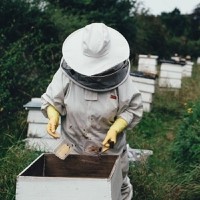
US-based researchers have successfully treated honey bees with a novel immune system booster for deadly viruses causing losses of the critical pollinator on a global level. Honey bees play a crucial role in our food system and production by pollinating crops, and their population decline, partly caused by viruses, is a direct danger to human health.
The scientists found that bees could fight many viruses when encouraging their cells to produce free radicals.
“This approach is especially exciting because it doesn’t just target a specific type of virus but helps with many different viruses,” says Daniel Swale, senior author of the study and the associate director for training and special projects in the UF Emerging Pathogens Institute and associate professor in the UF/IFAS entomology and nematology department.
“Additionally, we demonstrated that our treatment works in the lab and in colonies containing 80,000 bees in the field. This is huge because, in a hive setting, bees are exposed to so many different viruses and stressors, so successfully controlling viruses in that environment is very encouraging,” says Swale.
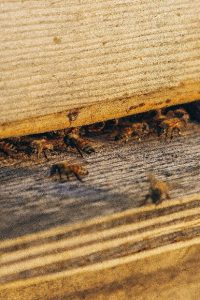
The protein was mixed with sugar water and drizzled over the honeycomb, making it accessible for the bees to consume.
A threatened specie
Michael Simone-Finstrom, a co-author of the study and a molecular research biologist with the ARS Honey Bee Breeding, Genetics and Physiology Research Lab in Louisiana, US, says that “varroa mites [a parasitic mite that attacks honey bees] are the number one cause of honey bee losses, but it’s important to point out that varroa mites, aside from physically weakening bees, also transmit viruses to bees.”
The researchers used a protein found in the cells of bees and most other “living things,” the compound pinacidil, which alters potassium ion channels and produces more free radicals.
“One of the big takeaways from this study is that potassium ion channels can be a target for improving immune system function in honey bees and possibly other insects. We would like to find a molecule, such as a peptide or a new technology that has the same effect as pinacidil but is more accessible to beekeepers,” says Swale.
The protein was mixed with sugar water and drizzled over the honeycomb, making it accessible for the bees to consume. The treatment showed protection from the Israeli acute paralysis virus, deformed wing viruses A and B, black queen cell virus and Lake Sinai viruses 1 and 2.
“While free radicals are often bad for cell health, they can be therapeutic in moderate amounts, as we see in this study. In this case, the additional free radicals signal to the immune system to ramp up, which helps the bees fight off viruses,” says Troy Anderson, a co-author of the paper and a professor of entomology at the University of Nebraska-Lincoln.
“If we can mitigate viruses in honey bee colonies, that would be a big step forward,” Simone-Finstrom adds.
The team of researchers says there are challenges in treating all commercial honey bees, although it “opens the door” to identify other, and maybe more cost-effective, treatments.
We are here to share current happenings in the bee industry. Bee Culture gathers and shares articles published by outside sources. For more information about this specific article, please visit the original publish source: Successful treatment for deadly honey bee viruses found in US study (nutritioninsight.com)
]]>Dominant in the San Diego region, foreign honey bees visit nearly twice as many flowers as native bees
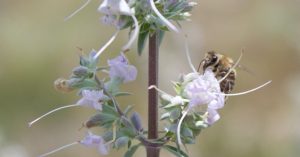
A honey bee visits white sage. Researchers have shown that pollination by honey bees, which are not native to the Americas, produces offspring of considerably inferior quality than offspring resulting from native pollinators. Credit: Dillon Travis
By:Mario Aguilera – [email protected]
With a broad mix of plant and animal species, the San Diego region is widely regarded as a global biodiversity hotspot.
As key pollinators, bees play a foundational role in the region’s floral diversity. But not all bees have the same influence on the plants they pollinate, new research from University of California San Diego scientists has revealed. Pollination by honey bees, which are not native to the Americas, produces plant offspring of considerably inferior quality (lower fitness), than offspring resulting from native pollinators, according to the study, published in Proceedings of the Royal Society B. The study is believed to be the first to directly compare offspring fitness resulting from honey bee pollination with other floral visitors.
Previous research offered evidence that predominantly feral honey bees account for more than 90 percent of the pollinators observed visiting flowers of abundantly blooming native plant species around San Diego. In their new study, School of Biological Sciences recent graduate student Dillon Travis and Professor Joshua Kohn have shown that honey bees visit approximately twice as many flowers on an individual plant before moving to the next plant, compared with native insect visitors. However, this methodical foraging behavior appears to have a detrimental effect on reproduction in the plants they visit because most of the pollen delivered to flowers will come from the same individual plant (known as self-pollination), which can lead to lower-quality offspring.
To gain perspective on the effects of such pollination dominance and propensity to visit multiple flowers on the same plant, the researchers conducted a series of experiments that evaluated the fitness of plant offspring across factors such as seed maturation, germination, survival, growth and reproduction. Using three common plant species from native habitats in San Diego County at locations that included the University of California Natural Reserve System’s Elliott Chaparral and Dawson Los Monos Canyon Reserves, the researchers assessed a variety of conditions including natural pollination, no pollination, honey bee pollination, native bee pollination and self- and cross-hand pollination.
Four to six weeks later they collected the seeds from each scenario and compared the fitness of each. Offspring resulting from pollination by native insects (mostly various species of bees), they found, were two- to five-times more fit—characterized as likely to mature into seed, germinate, grow and reproduce—than those resulting from pollination by honey bees. This seems to be the result of higher levels of self-pollen delivered by honey bees, since offspring resulting from hand pollination using pollen from the same individual plant were two- to 10-times less fit than offspring produced using pollen from a different plant of the same species.
“While honey bees are perceived as beautiful mutualists that are helping plants with reproduction, it turns out they may not be as good for plants as many native pollinators. We have found that they deliver lower-quality pollen than do native pollinators.”
— Professor Joshua Kohn
“While honey bees are perceived as beautiful mutualists that are helping plants with reproduction, it turns out they may not be as good for plants as many native pollinators,” said Kohn, a professor in the Department of Ecology, Behavior and Evolution. “We have found that they deliver lower-quality pollen than do native pollinators.”
In a related study (Travis and Kohn, in press), honey bees were shown to visit more flowers per plant than average among other pollinators across 44 different plant species, which included both crop and non-crop plants. So the foraging behavior of honey bees may regularly deliver more self-pollen, resulting in lower quality offspring.
Honey bees are the world’s most frequent floral visitor, accounting for some 13 percent of all global floral visits to native vegetation. They are native to Europe, Western Asia and Africa and were first brought to the Americas in the 17th century. San Diego is regarded as “honey bee heaven” with a higher frequency of floral visits by honey bees than nearly anywhere else in the world. The area also features more than 650 species of native bees and other pollinating insect species that interact with at least 2,400 types of plants, more than any other county in the United States.
“If honey bees generally lower seed fitness of native plants, it could make the native plant community more susceptible to invasion from introduced plant species that do not require insect pollination…” the researchers note in their paper. These introduced plants are often grasses and other invasives that help spread wildfires in these ecosystems.
“People see honey bees as providing a valuable service, which is pollination, but there’s a decent amount of evidence to show that they’re competing with native insects for resources like pollen and nectar,” said Travis, who indicated that honey bees are also known to have viruses that can be transferred to native bees. “Many conservation efforts are focused on saving the honey bee, but they are not in any danger of going extinct. In fact, their numbers have been increasing. The organisms that do need our help are the native plants and bees.”
We are here to share current happenings in the bee industry. Bee Culture gathers and shares articles published by outside sources. For more information about this specific article, please visit the original publish source: Plants Pollinated by Honey Bees Produce Lower-quality Offspring (ucsd.edu)
The study was funded by the Sea and Sage Audubon Society, the Messier Family Fund and a UC Multicampus Research Program grant.
]]>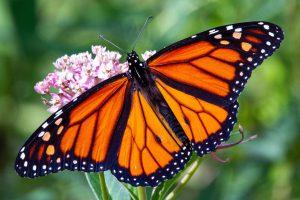
Photo by Joshua J. Cotten on Unsplash
If you’ve ever wondered how the monarch butterfly got its spots, University of Georgia researchers may have just found the answer.
The new study suggests that the butterflies with more white spots are more successful at reaching their long-distance wintering destination. Although it’s not yet clear how the spots aid the species’ migration, it’s possible that the spots change airflow patterns around their wings.
“We undertook this project to learn how such a small animal can make such a successful long-distance flight,” said lead author Andy Davis, an assistant researcher in UGA’s Odum School of Ecology. “We actually went into this thinking that monarchs with more dark wings would be more successful at migrating because dark surfaces can improve flight efficiency. But we found the opposite.”
The monarchs with less black on their wings and more white spots were the ones that made it to their ultimate destination, nearly 3,000 miles away in south and central Mexico.
“It’s the white spots that seem to be the difference maker,” Davis said.
Migration selects for butterfly spots
The researchers analyzed nearly 400 wild monarch wings collected at different stages of their journey, measuring their color proportions. They found the successful migrant monarchs had about 3% less black and 3% more white on their wings.
An additional analysis of museum specimens that included monarchs and six other butterfly species showed that the monarchs had significantly larger white spots than their nonmigratory cousins.
The only other species that came close to having the same proportion of white spots on its wing was its semi-migratory relative, the southern monarch.
Monarchs use solar energy to improve flight
The authors believe the butterflies’ coloring is related to the amount of radiation they receive during their journey. The monarchs’ longer journey means they’re exposed to more sunlight. As a result, they have evolved to have more white spots.
“The amount of solar energy monarchs are receiving along their journey is extreme, especially since they fly with their wings spread open most of the time,” Davis said. “After making this migration for thousands of years, they figured out a way to capitalize on that solar energy to improve their aerial efficiency.”
But as temperatures continue to rise and alter the solar radiation reaching Earth’s surface, monarchs will likely have to adapt to survive, said Mostafa Hassanalian, co-author of the study and an associate professor at the New Mexico Institute of Mining and Technology.
“With greater solar intensity, some of that aerial efficiency could go away,” Davis said. “That would be yet one more thing that is hindering the species’ fall migration to Mexico.”
Monarch breeding population is stable
But it’s not all bad news for the flying insects.
Davis’ previous work showed that summer populations of monarchs have remained relatively stable over the past 25 years. That finding suggests that the species’ population growth during the summer compensates for butterfly losses due to migration, winter weather and changing environmental factors.
“The breeding population of monarchs seems fairly stable, so the biggest hurdles that the monarch population faces are in reaching their winter destination,” Davis said. “This study allows us to further understand how monarchs are successful in reaching their destination.”
We are here to share current happenings in the bee industry. Bee Culture gathers and shares articles published by outside sources. For more information about this specific article, please visit the original publish source: Monarchs’ White Spots Aid Migration – Eurasia Review
]]>Preliminary Results from the Bee Informed Partnership
By: Nathalie Steinhauer, Mikayla Wilson, Dan Aurell, Selina Bruckner, Geoffrey Williams
Note: This is a preliminary analysis. Sample sizes and estimates are likely to change. A more detailed final report is being prepared for publication in a peer-reviewed journal at a later date. Previous years’ peer-reviewed publication can be accessed on the survey information page: https://beeinformed.org/citizen-science/loss-and-management-survey/.
The Bee Informed Partnership (http://beeinformed.org) is a non-profit organization that strives to improve honey bee colony health in the United States by performing data-driven research in collaboration with beekeepers. Its vision is to create an environment where new and established beekeepers can be successful in maintaining healthy honey bee colonies. One of the organization’s longest running programs, the national Colony Loss and Management Survey, was initiated with the support of the Apiary Inspectors of America in 2007. Since then, it has monitored colony loss rates of managed honey bees in the United States (Bruckner et al., 2023), as well as identified risk factors and protective measures associated with health, particularly as they relate to beekeeping management (Steinhauer, vanEngelsdorp and Saegerman, 2021). The survey is organized in collaboration with the Bee Lab at Auburn University (https://aub.ie/bees) and the Bee Lab at University of Maryland (https://www.umdbeelab.com/).
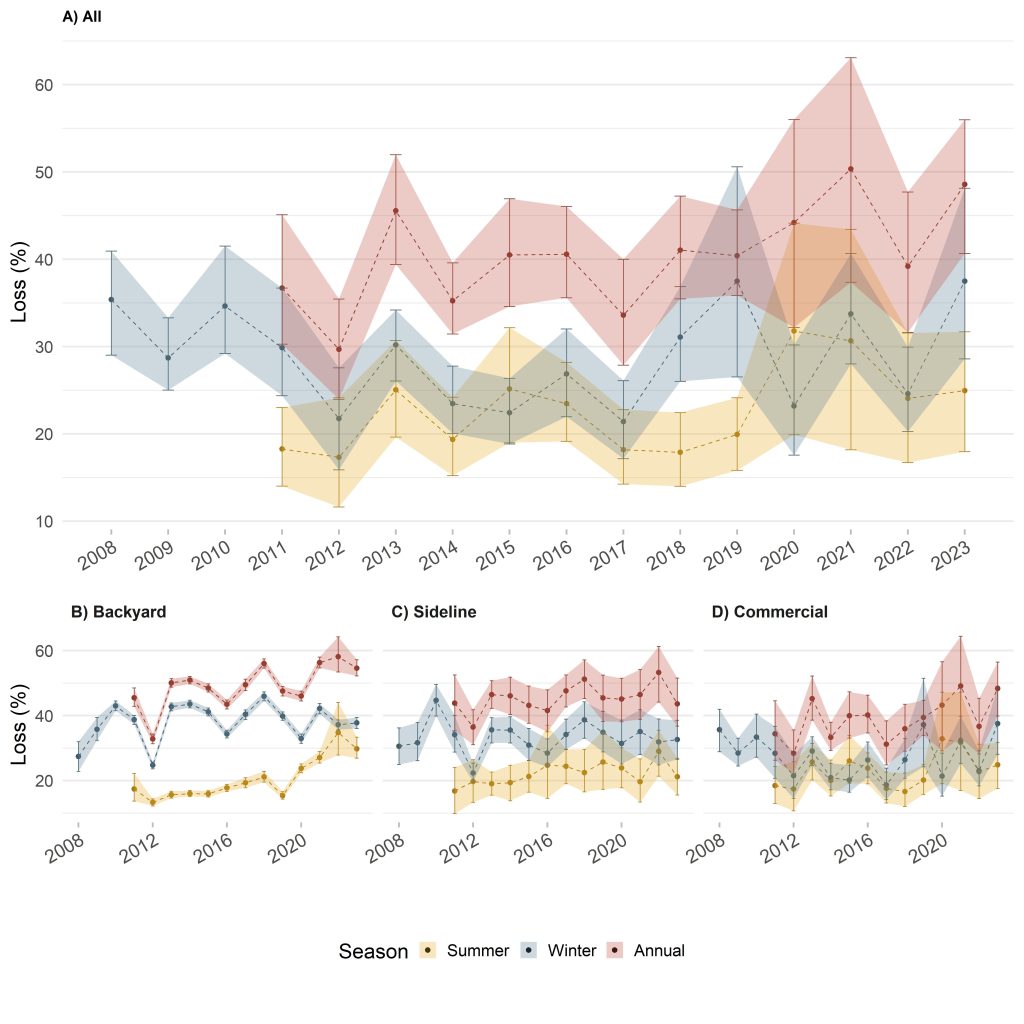
Figure 1. Seasonal managed honey bee colony loss rates in the United States across years (A), and by operation type (B-D): backyard (managing up to 50 colonies), sideline (managing 51-500), and commercial (managing >500 colonies) beekeepers. The loss rate was calculated as the total number of colonies lost divided by the number of colonies at risk during the season. Colonies at risk were composed of living colonies at the start of a period, as well as new colonies made or acquired, while excluding colonies sold or parted with. Annual loss covers the whole period from one 1 April to the next 1 April (in red); Summer (1 April – 1 October, in yellow); Winter (1 October – 1 April, in blue). Error bars represent the 95% confidence interval obtained from a bootstrap resampling of the data (n-out-of-n, 1000 rep).
The survey is a retrospective online questionnaire, which relies on voluntary participation of beekeepers across the country during the month of April. The 2023 survey covered the one year period between April 2022 and April 2023. Small scale beekeepers (1-50 colonies) and large-scale beekeepers (>50 colonies) took slightly different versions of the survey (survey question previews can be found at https://beeinformed.org/citizen-science/loss-and-management-survey/).
This year, 3,006 beekeepers from across the United States provided valid survey responses. These beekeepers collectively managed 314,360 colonies on 1 October 2022, representing 12% of the estimated 2.70 million managed honey-producing colonies in the country in 2022 (USDA NASS, 2023).
Colony loss rates were calculated as the ratio of the number of colonies lost to the number of colonies managed over a defined period. Loss rates should not be interpreted as a change in population size, but are best interpreted as a mortality rate. High levels of losses do not necessarily result in a decrease in the total number of colonies managed in the United States because beekeepers can replace lost colonies throughout the year.
During Summer 2022 (1 April 2022 – 1 October 2022), an estimated 24.9% [18.0 – 31.7, 95% bootstrapped confidence interval (CI) (Confidence intervals were obtained from the distribution of bootstrapped estimates for each group of respondents (n-out-of-n method, 1000 rep). Due to the stochastic nature of bootstrap analyses, 95% CI are expected to vary slightly at each computation.)] of managed colonies were lost in the United States (Fig. 1). This was on par with recent years. The Summer loss rate was just 1.1 percentage point (pp) higher than last year’s estimated Summer colony loss (23.8% [16.7 – 31.5 CI]), and 2.2 pp higher than the average Summer loss reported by beekeepers since the Summer of 2010 (22.6%, 12-year average), when Summer losses were first monitored.
During Winter 2022-2023 (1 October 2022 – 1 April 2023), an estimated 37.4% [28.6 – 48.1 CI] of managed colonies in the United States were lost (Fig. 1). This Winter loss rate was 13.2 pp in excess of the previous Winter loss rate (24.2% [20.3 – 29.9 CI]), and 9.1 pp higher than the average Winter loss (28.2%, 15-year average) reported by beekeepers since the start of the survey in 2008, making 2022-2023 the second highest year of Winter loss after 2018-2019 (37.7% [26.5 – 50.6 CI]). The percentage of colony loss over the Winter deemed “acceptable” by beekeepers was on average 21.3% in 2022-2023, which was on par with the previous nine years during which the acceptable loss has hovered around 20%. In 2022-2023, over 60% of the surveyed beekeepers reported Winter loss above this threshold.
Over the entire year (1 April 2022 – 1 April 2023), beekeepers in the United States lost an estimated 48.2% [40.7 – 56.0 CI] of their managed honey bee colonies (Fig. 1). This was 9.2 pp higher than last year’s estimated annual loss (39.0% [31.6 – 47.7 CI]), nearly as high as (2.6 pp lower than) the highest annual loss on record (2020-2021, 50.8% [37.4 – 63.1 CI]), and 8.5 pp higher than the average loss rate (39.6%, 12-year average) over the last 12 years.
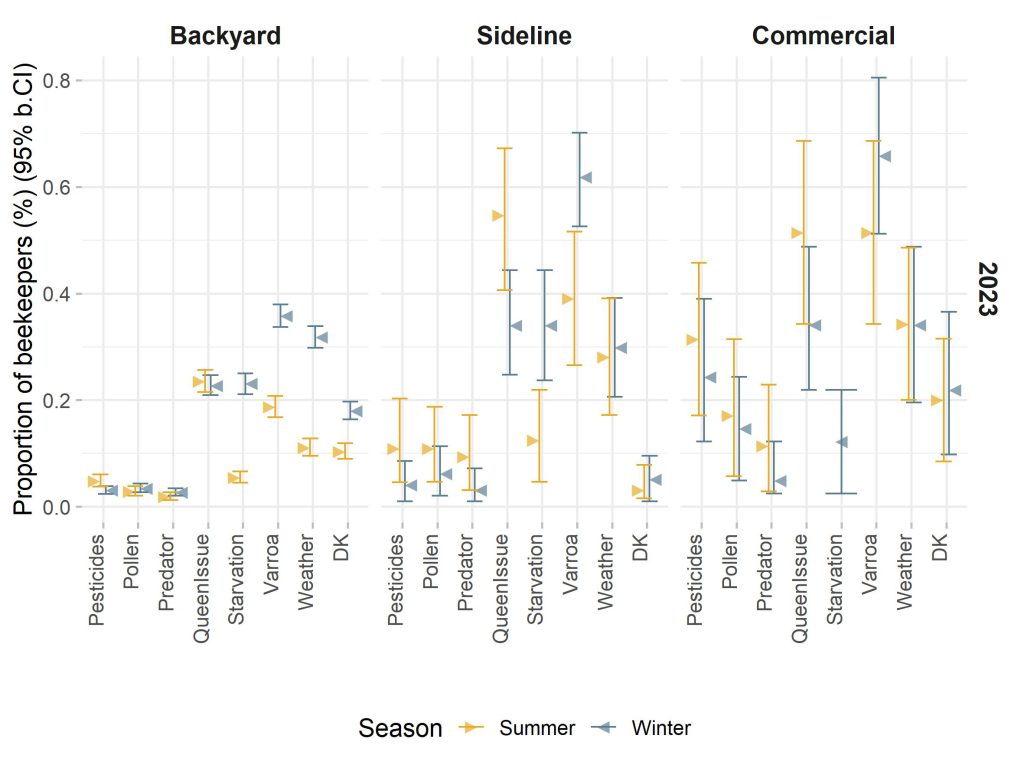
Figure 2. Self-reported causes of colony loss over Summer 2022 (1 April – 1 October, in yellow) and Winter 2022-23 (1 October – 1 April, in blue), as reported by U.S. beekeepers grouped by operation type: backyard (managing up to 50 colonies), sideline (managing 51-500), and commercial (managing >500 colonies). Number of respondents: backyard (Summer: 1,495, Winter: 2,070), sideline (Summer: 64, Winter: 97) and commercial (Summer: 35, Winter 41) beekeepers. The arrow represents the proportion of beekeepers having selected the specific cause of loss in a list of multiple choices associated with the question: “What factors do you think were the most prominent cause(s) of colony death in your operation in [season]?”. Errors bars represent the 95% confidence interval obtained from a bootstrap resampling of the data (n-out-of-n, 100 rep). Legend: Pesticides (Non-apicultural pesticides); Pollen (Nutritional stress (pollen deprivation)); Predators (e.g. bears); Queen issues; Starvation (honey/nectar/sugar water); Varroa (varroa mites and associated viruses); Weather (adverse weather (e.g. drought, cold snap)); DK (Don’t know). Answers selected by less than 10% of respondents in all three groups are not shown. Other multiple choice options not listed in the figure: Brood diseases (e.g. AFB, EFB), Natural disaster (e.g. hurricane, flood), Apicultural treatments (e.g. formic acid, amitraz), Shipping stress (e.g. overheating, truck issues). Equipment failure (e.g. moisture, ventilation), Failure of environmental controls in sheds, Scavenger pests (e.g. small hive beetle, wax moth).
As in previous years, backyard beekeepers experienced a higher annual rate of loss than commercial beekeepers in 2022-2023 (54.6% [52.2 – 57.2 CI] for backyard vs 47.9% [39.9 – 56.4 CI] for commercial). This represented a higher loss year than average for both backyard beekeepers (5.8 pp more than their 12-year average of 48.8%) and commercial beekeepers (9.7 pp more than their 12-year average of 38.2%), but it seems issues occurred at different times of the year for the two groups.
Backyard beekeepers again experienced one of their highest Summer losses on record (the last four years classified as the top four, three, one and two, respectively, in the 13-year record), with 29.8% Summer 2022 loss [26.9 – 33.4 CI], this was 10.0 pp over the previous 12-year average of 19.8%. Commercial beekeepers reported Summer losses (24.7% [17.6 – 31.7 CI]) on par (1.8 pp over) with their average over the previous 12 years (22.8%).
Though the loss rates of both groups were comparable for the Winter season (37.8% [36.0 – 39.4 CI] for backyard beekeepers, and 37.6% [28.1 – 49.1 CI] for commercial beekeepers), this represented a high loss season for the commercial group (10.7 pp over their 27.0% 15-year average), but an average season for backyard beekeepers (0.2 pp lower than their 38.0% 15-year average). Such high Winter loss rates for commercial beekeepers have only been reported once before in this survey, in 2018-2019.
The most prominent cause of colony death reported by beekeepers over the Winter 2022-23 was “varroa” (Varroa destructor, and its associated viruses), for all three operation types (Fig. 2). Backyard beekeepers then tended to cite “adverse weather” and “starvation” (meaning lack of honey, nectar, or sugar water) as the second and third most prominent causes of Winter colony loss in their operations. Sideline beekeepers equally cited “queen issues” and “starvation” as their second most prominent cause of Winter loss. Commercial beekeepers cited equally “queen issues” and “adverse weather”.
In the Summer of 2022, the most prominent cause of colony death reported by beekeepers of all operation types was “queen issues” (Fig. 2). Both backyard and sideline beekeepers then listed “varroa” and “adverse weather”. Commercial beekeepers cited “varroa” as frequently as “queen issues” as their most prominent causes of loss over the Summer, followed by “adverse weather”.
Although the total number of honey bee colonies in the country has remained relatively stable over the last 20 years (~2.6 million colonies according to the USDA NASS Honey Reports), loss rates remain high, indicating that beekeepers are under substantial pressure to recover from losses by creating new colonies every year. The Bee Informed Partnership’s annual Colony Loss and Management Survey offers an important record of such loss rates experienced by beekeepers across the United States each year. Until the survey was launched in 2007, there was no rigorous record of loss rates of managed honey bee colonies, making it difficult to compare losses against historic levels.
To obtain more information about Bee Informed Partnership’s annual national Colony Loss and Management Survey, visit: https://beeinformed.org/citizen-science/loss-and-management-survey/.
State level estimates, including estimates for single-state and multi-state operations, will be published on https://research.beeinformed.org/loss-map/.
Authors
Nathalie Steinhauer – Department of Entomology, University of Maryland, College Park, MD, USA and Bee Informed Partnership, College Park, MD, USA
Mikayla Wilson – Department of Entomology, University of Maryland, College Park, MD, USA and Bee Informed Partnership, College Park, MD, USA
Dan Aurell – Department of Entomology & Plant Pathology, Auburn University, Auburn, AL, USA
Selina Bruckner – Department of Entomology & Plant Pathology, Auburn University, Auburn, AL, USA
Geoffrey Williams – Department of Entomology & Plant Pathology, Auburn University, Auburn, AL, USA
Corresponding authors: [email protected] (NS) & [email protected] (GW)
References cited
Bruckner, S., Wilson, M., Aurell, D., Rennich, K., vanEngelsdorp, D., Steinhauer, N. and Williams, G.R. (2023) ‘A national survey of managed honey bee colony losses in the USA: results from the Bee Informed Partnership for 2017–18, 2018–19, and 2019–20’, Journal of Apicultural Research, 62(3), pp. 429–443. Available at: https://doi.org/10.1080/00218839.2022.2158586.
Steinhauer, N., vanEngelsdorp, D. and Saegerman, C. (2021) ‘Prioritizing changes in management practices associated with reduced winter honey bee colony losses for US beekeepers’, Science of The Total Environment, 753, p. 141629. doi: https://doi.org/10.1016/j.scitotenv.2020.141629
USDA NASS (2023) Honey (March 2023). ISSN: 1949-1492. Available at: https://usda.library.cornell.edu/concern/publications/fq977t78v?locale=es (Accessed 16 June 2023).
Previous survey results
Aurell, D., Bruckner, S., Wilson, M., Steinhauer, N., Williams, G., for the Bee Informed Partnership (2022). United States Honey Bee Colony Losses 2021-2022: Preliminary Results. https://beeinformed.org/2022/07/27/united-states-honey-bee-colony-losses-2021-2022-preliminary-results-from-the-bee-informed-partnership/ (Accessed 16 June 2023).
Steinhauer, N., Aurell, D., Bruckner, S., Wilson, M., Rennich, K., vanEngelsdorp, D., Williams, G., for the Bee Informed Partnership (2021). United States Honey Bee Colony Losses 2020-2021: Preliminary Results. https://beeinformed.org/wp-content/uploads/2021/06/BIP_2020_21_Losses_Abstract_2021.06.14_FINAL_R1.pdf (Accessed 16 June 2023).
Kulhanek, K., Steinhauer, N., Rennich, K., Caron, D. M., Sagili, R. R., Pettis, J. S., Ellis, J. D., Wilson, M. E., Wilkes, J. T., Tarpy, D. R., Rose, R., Lee, K., Rangel, J. and vanEngelsdorp, D. (2017) ‘A national survey of managed honey bee 2015–2016 annual colony losses in the USA’, Journal of Apicultural Research, 56(4), pp. 328–340. https://www.tandfonline.com/doi/full/10.1080/00218839.2017.1344496.
Lee, K. V., Steinhauer, N., Rennich, K., Wilson, M. E., Tarpy, D. R., Caron, D. M., Rose, R., Delaplane, K. S., Baylis, K., Lengerich, E. J., Pettis, J., Skinner, J. A., Wilkes, J. T., Sagili, R., vanEngelsdorp, D. and Partnership, for the B. I. (2015) ‘A national survey of managed honey bee 2013–2014 annual colony losses in the USA’, Apidologie, pp. 1–14. https://link.springer.com/article/10.1007/s13592-015-0356-z.
Seitz, N., Traynor, K. S., Steinhauer, N., Rennich, K., Wilson, M. E., Ellis, J. D., Rose, R., Tarpy, D. R., Sagili, R. R., Caron, D. M., Delaplane, K. S., Rangel, J., Lee, K., Baylis, K., Wilkes, J. T., Skinner, J. A., Pettis, J. S. and vanEngelsdorp, D. (2015) ‘A national survey of managed honey bee 2014–2015 annual colony losses in the USA’, Journal of Apicultural Research, 54(4), pp. 292–304. https://www.tandfonline.com/doi/full/10.1080/00218839.2016.1153294.
Spleen, A. M., Lengerich, E. J., Rennich, K., Caron, D., Rose, R., Pettis, J. S., Henson, M., Wilkes, J. T., Wilson, M., Stitzinger, J., Lee, K., Andree, M., Snyder, R., vanEngelsdorp, D., and for the Bee Informed Partnership (2013) ‘A national survey of managed honey bee 2011–12 winter colony losses in the United States: results from the Bee Informed Partnership’, Journal of Apicultural Research, 52(2), pp. 44–53. https://www.tandfonline.com/doi/abs/10.3896/IBRA.1.52.2.07.
Steinhauer, N. A., Rennich, K., Wilson, M. E., Caron, D. M., Lengerich, E. J., Pettis, J. S., Rose, R., Skinner, J. A., Tarpy, D. R., Wilkes, J. T. and vanEngelsdorp, D. (2014) ‘A national survey of managed honey bee 2012-2013 annual colony losses in the USA: results from the Bee Informed Partnership’, Journal of Apicultural Research, 53(1), pp. 1–18. https://www.tandfonline.com/doi/abs/10.3896/IBRA.1.53.1.01.
vanEngelsdorp, D., Caron, D., Hayes, J., Underwood, R., Henson, M., Rennich, K., Spleen, A., Andree, M., Snyder, R., Lee, K., Roccasecca, K., Wilson, M., Wilkes, J., Lengerich, E. and Pettis, J. (2012) ‘A national survey of managed honey bee 2010-11 winter colony losses in the USA: results from the Bee Informed Partnership’, Journal of Apicultural Research, 51(1), pp. 115–124. https://www.tandfonline.com/doi/abs/10.3896/IBRA.1.51.1.14.
vanEngelsdorp, D., Hayes, J., Underwood, R. M., Caron, D. and Pettis, J. (2011) ‘A survey of managed honey bee colony losses in the USA, fall 2009 to winter 2010’, Journal of Apicultural Research, 50(1), pp. 1–10. https://www.tandfonline.com/doi/abs/10.3896/IBRA.1.50.1.01.
vanEngelsdorp, D., Hayes, J., Underwood, R. M. and Pettis, J. (2008) ‘A Survey of Honey Bee Colony Losses in the U.S., Fall 2007 to Spring 2008’, PLoS ONE, 3(12). https://journals.plos.org/plosone/article?id=10.1371/journal.pone.0004071.
vanEngelsdorp, D., Hayes, J., Underwood, R. M. and Pettis, J. S. (2010) ‘A survey of honey bee colony losses in the United States, fall 2008 to spring 2009’, Journal of Apicultural Research, 49(1), pp. 7–14. https://www.tandfonline.com/doi/abs/10.3896/IBRA.1.49.1.03.
vanEngelsdorp, D., Underwood, R., Caron, D. and Hayes, J. (2007) ‘An estimate of managed colony losses in the winter of 2006-2007: A report commissioned by the apiary inspectors of America’, American Bee Journal, 147(7), pp. 599–603.
]]>BY LADD EGAN
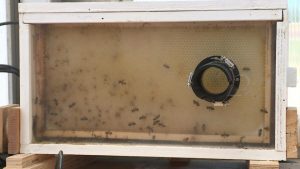
PROVO, Utah – Students at Brigham Young University have been hard at work cracking the code of the honeybees’ waggle dance and hope to take their research to the next level by communicating back to the bees.
“It’s this waggle that is able to convey to other bees where other food sources are,” said BYU computer science student Caelen Miller. “The angle that the bee waggles with respect to the top of the hive, is the same as the angle between the hive and sun.”
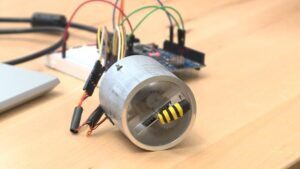 Inside a greenhouse on campus, the students set up a beehive with a glass covered section so that a camera can captures the bees’ waggle dance.
Inside a greenhouse on campus, the students set up a beehive with a glass covered section so that a camera can captures the bees’ waggle dance.
“It’s about one second of waggle dance per kilometer—from what we can tell right now,” Miller said.
The bees perform the waggle when they return from collecting nectar and pollen. Using computers, the students analyze the movements in real time.
“It reads both the distance that the bees waggle as well as the angle it’s waggling at,” said Tanner Day, who is also majoring in computer science. “From there, it extracts those parameters and sends it to another algorithm, which then uses that to essentially put a dot on a map.”
The students aren’t stopping there. The next step is attempting to give the bees directions to a specific location using a robotic bee.
“Which will allow us to control the bees and send them where we want to,” Miller said.
They’re still fine-tuning the robot bee so that it can correctly imitate sound, vibration, movement and how to give a taste of nectar.
“It will be exciting to see how well they’ll follow and how accurate we’ll be able to communicate back to the bees,” Day said.
The experiment would include setting up nectar and flowers in an area where the bees don’t normally forage.
“Then we would have our robot bee send the signal to the other bees through the waggle dance in order to tell them to go to that specific location,” Miller said.
For the computer science students, working hands-on with bees has been an unexpected academic adventure.
“It’s been a really fun project,” Day said.
“This has been fantastic,” Miller said. “I’m really excited to get to the testing of the mechanical bee.”
This research has been several years in the making and they anticipate having the robotic bee working by the end of this summer.
We are here to share current happenings in the bee industry. Bee Culture gathers and shares articles published by outside sources. For more information about this specific article, please visit the original publish source: BYU students build robotic bee to communicate through ‘waggle dance’ (ksltv.com)
]]>by Shelby Lawson, University of Illinois at Urbana-Champaign
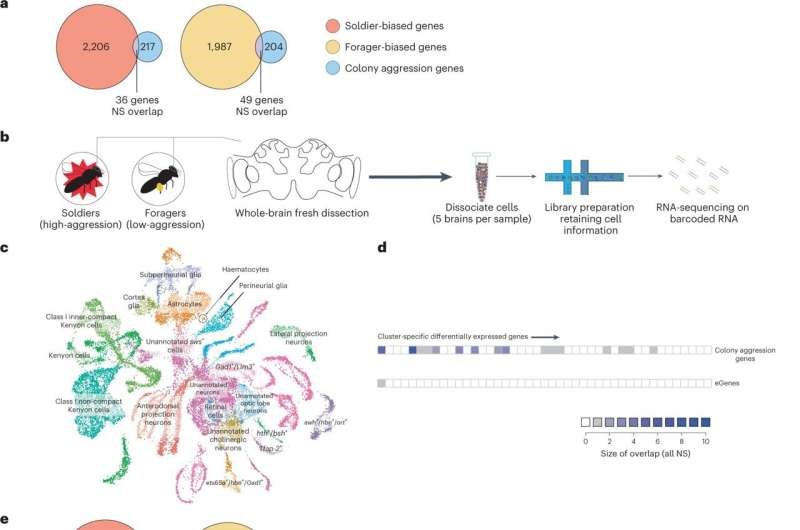
Dissimilarity of brain GRN architecture between soldiers and foragers is greater in high-aggression honeybee colonies. Credit: Nature Ecology & Evolution (2023). DOI: 10.1038/s41559-023-02090-0
Collective behaviors are present across many different animal groups: schools of fish swimming in a swirling pattern together, large flocks of birds migrating through the night, groups of bees coordinating their behavior to defend their hive.
These behaviors are commonly seen in social insects where as many as thousands of individuals work together, often with distinct roles. In honey bees, the role a bee plays in the colony changes as they age. Younger bees perform duties inside the hive, such as nursing and wax building, while older bees transition to roles outside of the hive, either foraging for food (foragers) or defending the colony (soldiers).
What determines whether older bees become foragers or soldiers is unknown, but a new study published in Nature Ecology and Evolution explores the genetic mechanisms underlying the collective behavior of colony defense, and how these mechanisms relate to the colony’s overall aggression.
“Honey bees do not have a size-based division of labor, like you might see in termites or ants,” said Ian Traniello, former graduate student at University of Illinois Urbana-Champaign, now an associate research scholar at Princeton University and first author on the study.
“If you ask anyone off the street to guess which ant is a soldier versus a forager, they probably will guess it right 100% of the time, because the soldiers are huge. Honey bees instead have an age-based division of labor, where older bees tend to be foragers or soldiers, both of which are dangerous and potentially lethal roles.”
A genome-wide association study conducted previously on a sub-species of honey bee in Puerto Rico that had evolved to be less aggressive in recent years, revealed strong associations between variation in the sequence of some genes and the level of overall colony aggression. Researchers called these “colony aggression genes.”
In the current study, researchers compared the expression and regulation of genes in the brains of soldiers and foragers, and across colonies that varied in aggressiveness. Researchers measured colony aggressiveness by counting the number of stings on suede patches placed outside the hives after a disturbance.
They identified soldiers as the bees that attacked the patches and foragers as the bees that returned to the hive with pollen. The researchers then used single-cell transcriptomics and gene regulatory network analysis to compare the brains of forager and soldier bees, from low and high aggression colonies.
The researchers found that, although there were thousands of genes in the brain that differed in their expression between soldiers and foragers, none of them were part of the colony aggression gene list. However, when they created models of brain gene regulatory networks, which control when and where specific genes are expressed, the researchers found that the structure of these networks differed between soldiers and foragers—and the differences were bigger when the soldiers and foragers came from a more aggressive colony.
“What we think is happening is that the regulation of genes associated with collective behavior affects the mechanisms that underlie division of labor,” Traniello explained. “So, colonies can become more or less aggressive by influencing the aggression level of the individuals within that colony. Basically, a forager may be more or less likely to transition to a soldier-like state if the environment calls for it.”
The findings highlight the importance of gene regulation to our understanding of the relationship between genes and behavior.
“While a few studies have found potential heritable differences between soldiers and foragers, this study demonstrates that older honey bees may have the potential to take on either role,” said Gene Robinson (GNDP), IGB Director and author on the paper. “In colonies that are more aggressive, likely due to increased danger in the environment, older bees may just be more predisposed to become soldiers to help defend the colony.”
Plans for future directions include developing functional tests to explore the role of the gene networks identified in the study, and to identify spatially where they are being expressed in the brain. Traniello says that he looks forward to exploring these new questions.
“We have extraordinary technologies to probe genes and behavior at an unprecedented scale, both with single-cell and, now, spatial transcriptomics,” Traniello said.
“These give us new means for understanding old questions, like the relationship from individual to collective, or the relationship between genotype to phenotype. It’s exciting to be able to take these tools and apply them in naturalistic contexts, and I hope this work inspires others to do the same.”
More information: Ian M. Traniello et al, Single-cell dissection of aggression in honeybee colonies, Nature Ecology & Evolution (2023). DOI: 10.1038/s41559-023-02090-0
We are here to share current happenings in the bee industry. Bee Culture gathers and shares articles published by outside sources. For more information about this specific article, please visit the original publish source: DOI: 10.1038/s41559-023-02090-0
]]>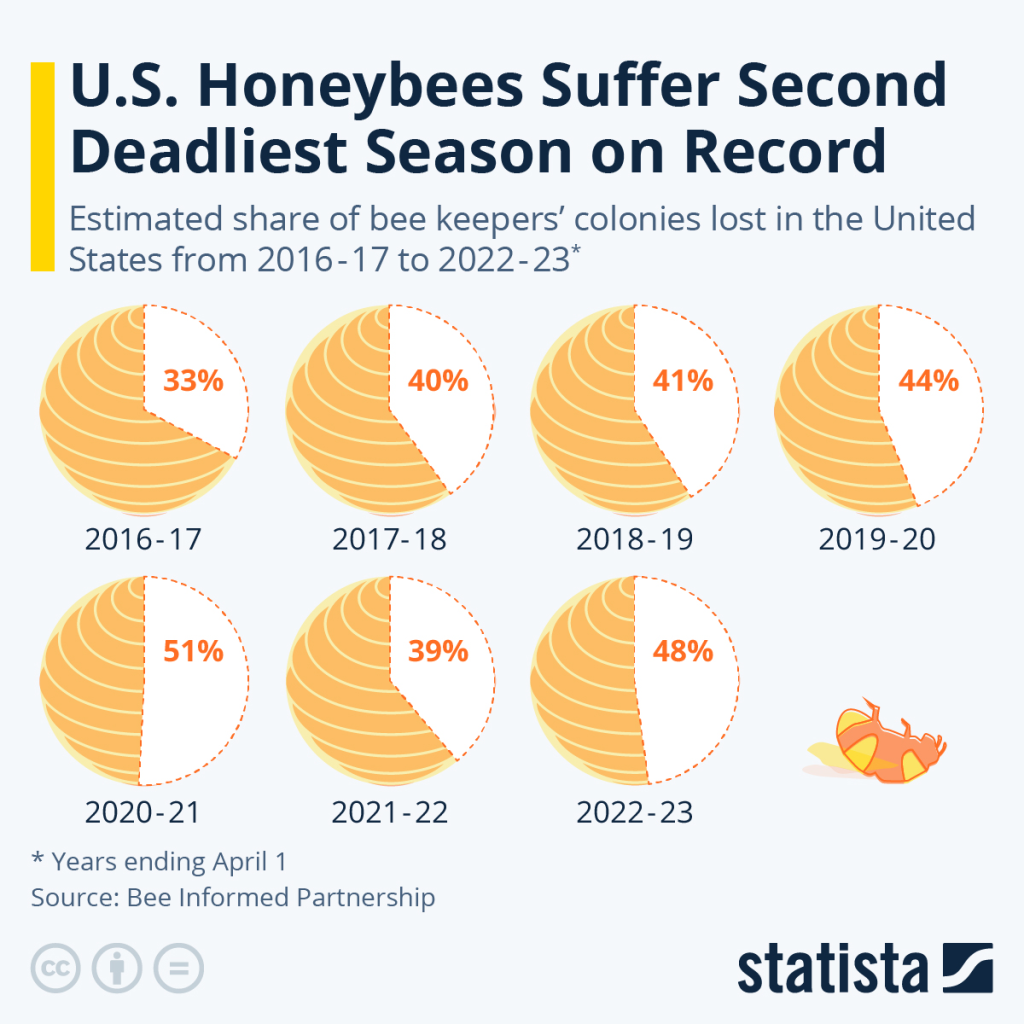
This chart shows the estimated share of bee keepers’ colonies lost in the United States from 2016-17 to 2022-23.
We are here to share current happenings in the bee industry. Bee Culture gathers and shares articles published by outside sources. For more information about this specific article, please visit the original publish source: Chart: U.S. Honeybees Suffer Second Deadliest Season on Record | Statista
]]>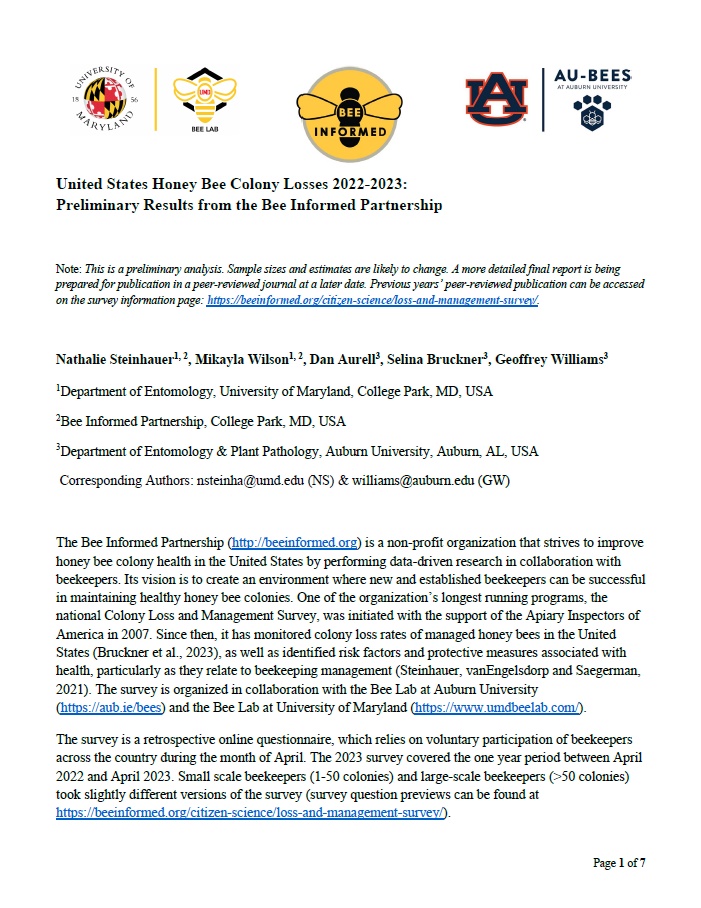
Links:
Previous years: https://beeinformed.org/citizen-science/loss-and-management-survey/
BIP website: https://beeinformed.org/
Bee Lab at Auburn University: https://linktr.ee/auburnbees
Bee Lab at University of Maryland: https://www.umdbeelab.com/
Survey question previews: https://beeinformed.org/citizen-science/loss-and-management-survey/
To read the rest of the Preliminary Results, go to Bee Informed Partnership’s website: https://beeinformed.org/
]]>By Bhavana Kunkalikar Reviewed by Lily Ramsey, LLM
In a recent study published in the Nutrients journal, researchers evaluated using bee pollen as a nutrient source. The study focused on understanding bee pollens’ nutrient richness and possible role in the pathophysiological mechanisms linked to imbalanced nutrient levels.
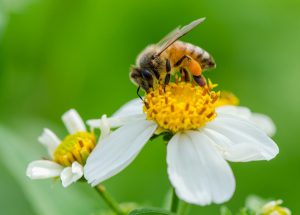
Study: Translational Research on Bee Pollen as a Source of Nutrients: A Scoping Review from Bench to Real World. Image Credit: TippaPatt/Shutterstock.com
Background
Healthy nutrition is becoming increasingly important in the field of biomedical sciences. The role of nutritional deficiencies and imbalances in causing global public health issues, including cardiovascular and metabolic diseases, has been extensively proven.
Bee pollen has been identified as a potential aid in reducing health issues through nutritional interventions. Bee pollen is currently under extensive study and is a highly nutritious and well-balanced source of nutrients.
About the study
In the present study, researchers explored evidence supporting bee pollen (BP) usage as a nutrient source.
A scoping review was conducted to evaluate the existing evidence on the nutritional benefits of BP in both standard and pathophysiological environments. The team employed available data to assess the evidence, identify areas lacking knowledge, and create recommendations for future study.
Effective strategies have been developed, and efforts have been made to establish standards for framing, normalizing, and reporting conditions and achievements.
The Preferred Reporting Items for Systematic Reviews and Meta-Analysis Extension for Scoping Reviews (PRISMA-ScR) guidelines checklist, which was developed based on the Enhancing the Quality and Transparency of health research (EQUATOR) group’s approaches and released in 2018, is one of the recommended guidelines for systematic reviews and meta-analyses.
The focus was primarily on publications released within the past four years. The initial literature research revealed that there was repetition among bioactivity-related parameters studied for BP. Two previous general reviews involving BP were published before 2020.
Scientific data for analysis were gathered from various international databases specializing in medical and pharmaceutical fields, including PubMed, Scopus, ScienceDirect, Cochrane Library, Web of Science, and Google Scholar. The team initially searched using the term “bee pollen” to identify relevant publications.
Results
The team found that BP is a nutrient-rich food source containing proteins, minerals, vitamins, unsaturated fatty acids, and oligo-elements. It is also low in calories and generally well-tolerated and safe, except for the possibility of allergic responses or external pollution, which can be managed and predicted.
Hazards associated with BP can result from external contamination, which can significantly impact pollen due to its sensitivity or from unfavorable storage and processing conditions.
Documenting pollen composition and considering patient sensitivity can prevent allergic responses to the product. Additionally, BP is safe for most physiological situations, including among children, the elderly, and recovering patients. BP is a valuable source of essential elements for pregnant and breastfeeding women.
A study of 27 commercial BP samples found that consuming 40 g of the product daily while breastfeeding can provide a significant portion of daily copper, manganese, iron, and selenium needs.
A review of over 100 published studies found that the primary components of BP, listed in order of weight or weight importance, are carbohydrates, lipids, proteins, ash, fibers, and other elements. The presence of polyols in the carbohydrate matrix contributes to its lower caloric value and helps maintain a balanced intake of energy sources and other nutrients.
BP’s rich composition makes it ideal for human nutrition, as it can help rebalance or prevent various nutritional deficiencies along with pathophysiological conditions.
The most extensively researched characteristic of BP is its antioxidant activity. Furthermore, the significance of BP usage lies in its potential as an anti-inflammatory agent.
The activity of bee pollen composition varies greatly depending on various factors such as plant and bee species, geographical region, timing, soil type, processing, and environmental conditions. Comparative studies have found that multi-floral pollens have stronger antioxidant activity than mono-floral pollens.
BP has significant anti-inflammatory effects on various types of inflammation, such as localized and systemic forms like digestive wall inflammations and neuroinflammation.
BP’s anti-inflammatory potential has been extensively researched, with different experimental studies highlighting various mechanisms.
The anti-inflammatory phytochemicals found in BP, including polyphenols, as well as other phytonutrients such as peptides, lipids, polysaccharides, and other compounds, have been linked to these activities.
Additionally, the team noted that the anti-inflammatory activity of BP varies based on bee species, in addition to differences based on botanical origin.
Conclusion
Overall, the study findings suggested that addressing the gaps identified in their study is crucial for improving research on BP.
The researchers recommend utilizing high-throughput technologies like omics sciences and computational-based simulation techniques to analyze the vast and diverse data.
Journal reference:
- Kacemi, R. and Campos, M. (2023) “Translational Research on Bee Pollen as a Source of Nutrients: A Scoping Review from Bench to Real World”, Nutrients, 15(10), p. 2413. doi: 10.3390/nu15102413. https://www.mdpi.com/2072-6643/15/10/2413
We are here to share current happenings in the bee industry. Bee Culture gathers and shares articles published by outside sources. For more information about this specific article, please visit the original publish source: Use of bee pollen as a nutrient source (news-medical.net)
]]>- Steven M. Carr
Scientific Reports volume 13, Article number: 9386 (2023) Cite this article
Abstract
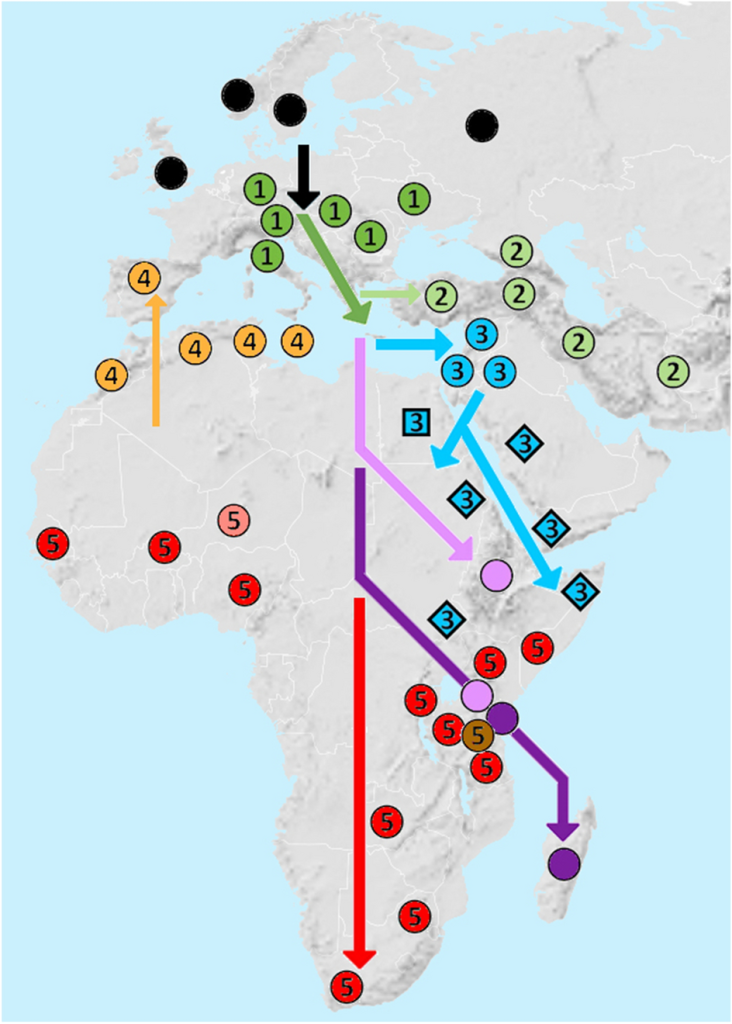
Figure 3 From: Multiple mitogenomes indicate Things Fall Apart with Out of Africa or Asia hypotheses for the phylogeographic evolution of Honey Bees (Apis mellifera)
Previous morpho-molecular studies of evolutionary relationships within the economically important genus of honey bees (Apis), including the Western Honey Bee (A. mellifera L.), have suggested Out of Africa or Asia origins and subsequent spread to Europe. I test these hypotheses by a meta-analysis of complete mitochondrial DNA coding regions (11.0 kbp) from 22 nominal subspecies represented by 78 individual sequences in A. mellifera. Parsimony, distance, and likelihood analyses identify six nested clades: Things Fall Apart with Out of Africa or Asia hypotheses. Molecular clock-calibrated phylogeographic analysis shows instead a basal origin of A. m. mellifera in Europe ~ 780 Kya, and expansion to Southeast Europe and Asia Minor ~ 720 Kya. Eurasian bees spread southward via a Levantine/Nilotic/Arabian corridor into Africa ~ 540 Kya. An African clade re-established in Iberia ~ 100 Kya spread thereafter to westerly Mediterranean islands and back into North Africa. Nominal subspecies within the Asia Minor and Mediterranean clades are less differentiated than are individuals within other subspecies. Names matter: paraphyletic anomalies are artefacts of mis-referral in GenBank of sequences to the wrong subspecies, or use of faulty sequences, which are clarified by inclusion of multiple sequences from available subspecies.
Phylogeographic evolution in context of geographic distribution2 of subspecies of A. mellifera as inferred from mitogenomic data. Numbered symbols indicate five clades described in the text and in Fig. 2. Dark and light green circles indicate respectively subspecies in the Southeast European and Asia Minor clades included within the Eurasian superclade. Blue symbols indicate the Levantine (circles), Nilotic (squares), and Arabian (A. m. jemenitica) (diamonds) clades. Light and dark purple circles indicate independent A. m. simensis and A. m. unicolor lineages, respectively. Light orange symbols indicate subspecies in the Mediterranean clade. Red circles indicate the paraphyletic assemblage of A. m. scutellata and A. m. capensis, including A. m. adansonii (light red) and A. m. monticola (brown). Base map modified from [https://commons.wikimedia.org/wiki/File:BlankMap-World.svg].
We are here to share current happenings in the bee industry. Bee Culture gathers and shares articles published by outside sources. For more information about this specific article, please visit the original publish source: Multiple mitogenomes indicate Things Fall Apart with Out of Africa or Asia hypotheses for the phylogeographic evolution of Honey Bees (Apis mellifera) | Scientific Reports (nature.com)
]]>